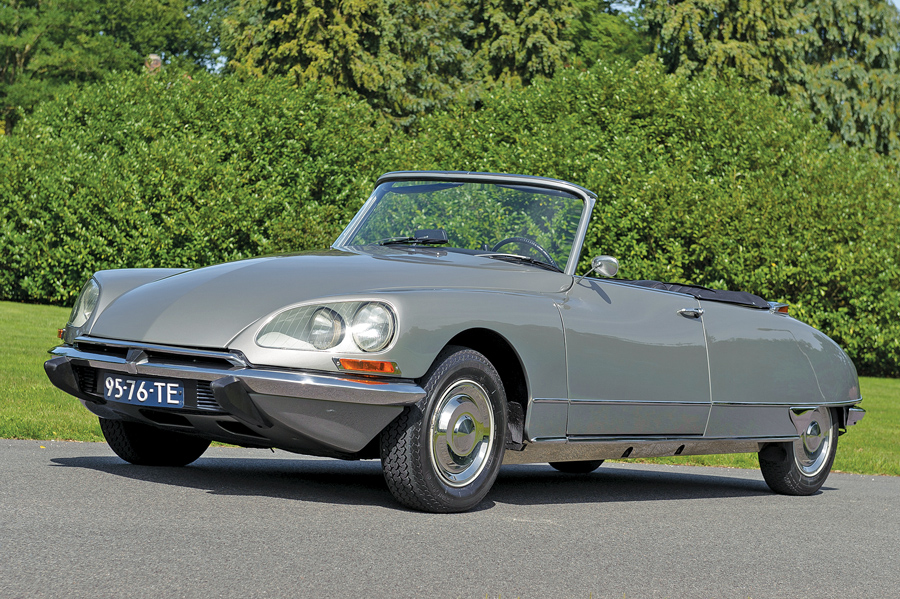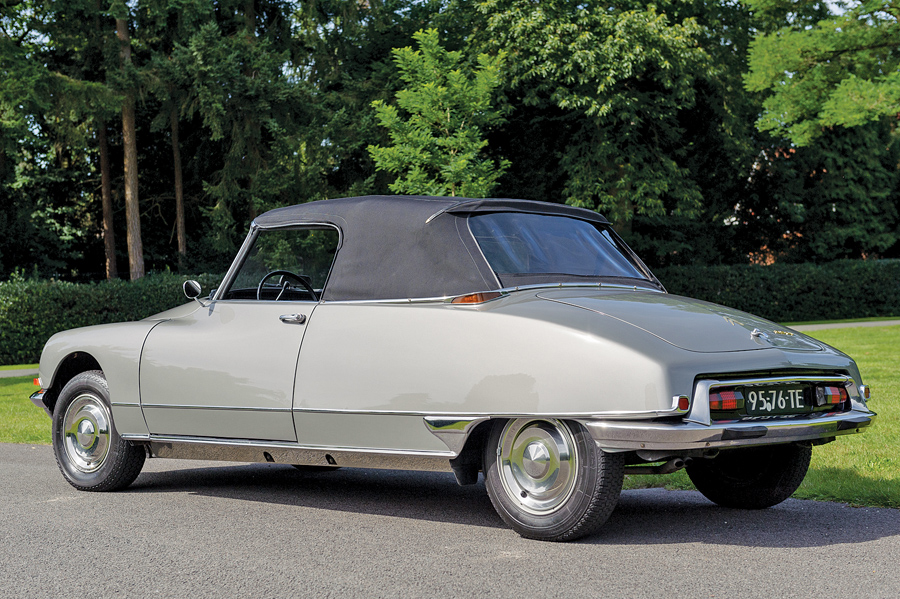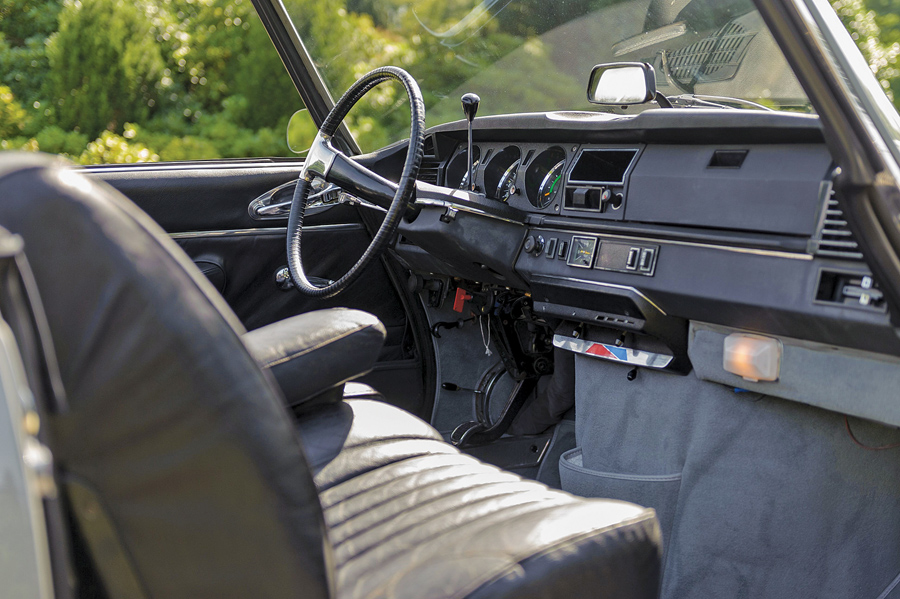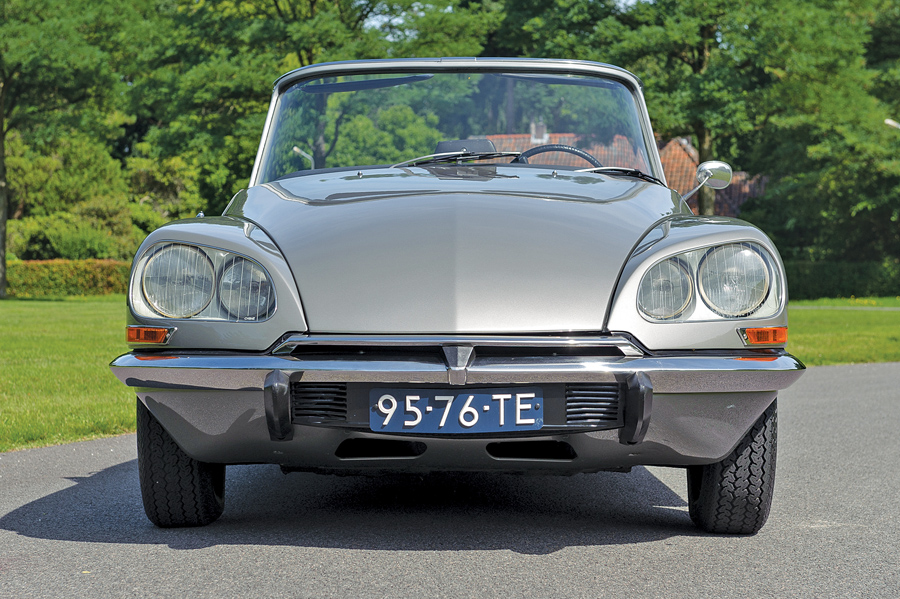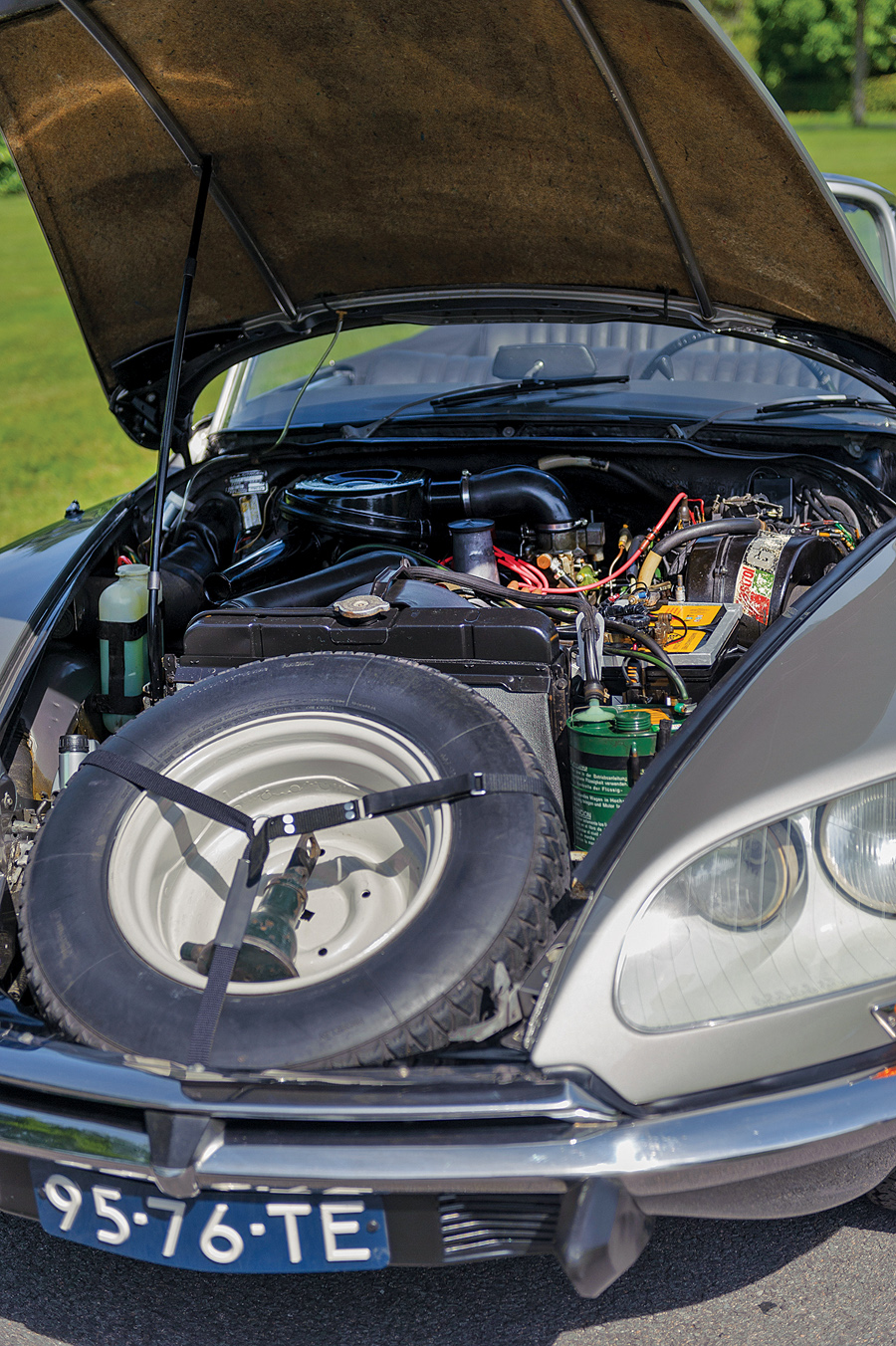SCM Analysis
Detailing
| Vehicle: | 1970 Citroën DS 21 Décapotable by Chapron |
| Years Produced: | 1960–71 |
| Number Produced: | 1,365 |
| Original List Price: | 35,500 FF ($6,429) |
| SCM Valuation: | $173,000 |
| Distributor Caps: | NOS $42.75 |
| Chassis Number Location: | On right side, top of bulkhead |
| Engine Number Location: | Left side of block |
| Club Info: | Citroenvie! |
| Website: | http://www.Citroenvie.com |
| Alternatives: | 1950–51 Lancia Aurelia B50 cabriolet, 1962–67 Mercedes-Benz 300SE cabriolet, 1970–71 Mercedes-Benz 280SE 3.5 cabriolet |
| Investment Grade: | A |
This car, Lot 122, sold for $221,904, including buyer’s premium, at Bonhams’ Chantilly Auction in Chantilly, FRA, on September 10, 2017.
I recently wrote about another DS usine (factory) convertible in SCM’s May 2017 issue (“Market Moment,” p. 112). That car was a 1965 DS 19 barn find that needed everything and sold for $107,693 at Artcurial’s Rétromobile auction in February 2017. For slightly over double that price, one could have bought this 1970 example. Which was the better buy?
Gentlemen prefer…
Our query partially depends on which style/year DS you prefer: Do you covet an early, single-headlight car or the later “swiveling”-headlight example that appeared in 1968? Both have their proponents. The early cars are pure Bertoni (not Bertone), but the later glass-covered headlights are also stunning with their main outside lights, which move vertically based on the angle of the rear of the car. The inside high beams “see” around corners.
Our subject DS also offers the larger 2.1-liter, 115-hp, five-bearing engine over the original three-bearing, 1.9-liter, 83-hp engine of the 1965 car.
Other prime differences include their dashboards. The more-exciting, swoopy design — with the metal dash painted to match the body color — appeared in the earlier cars.
In 1970, DS cars had a more conventional — some would say boring — black dashboard.
Both cars have semi-automatic, 4-speed gearboxes (a manual was available in certain years/models).
Finally, what fluid is used in their hydraulic systems?
The 1965 car has the original LHS “red” brake fluid, which is said to offer a nicer ride. However, as it is a vegetable-based fluid — like conventional brake fluid — it attracts water. If the fluid is not flushed and changed every year or so, it can cause hydraulic components to rust.
This is not a good situation, especially because many of our special cars remain parked much of the time.
In 1967 (mid-1969 in the United States and Canada), Citroën changed to a “green” LHM mineral system, which was a big improvement.
Many of the older cars have been upgraded to LHM by now, but there’s also a recent movement to keep the original fluids in the older cars. Just change the fluid periodically, and you’re good to go.
Not perfect
There are a few things that give me pause on our subject car, and tires are one issue.
When someone skimps on tires for a car of this caliber, it makes me wonder what other corners were cut. Michelin owned Citroën during this period, and the DS was designed around Michelin XAS tires, which are widely available.
The taillights are another problem.
The taillights on usine convertibles typically used Lucas round lenses on all worldwide deliveries. However, later convertibles used rectangular European lenses. This car’s lenses should have chrome Pallas trim surrounds.
And while I personally love the original interior, others may find it exhibits a little too much patina.
This is a rare car
Rarity is an important consideration in our hobby, and the earlier cars sold far better: 130 usine convertibles were produced in 1965, while only 40 were built in 1970. Only 1,365 factory convertibles were built over their 11-year run (from 1960 through 1971).
Of the usine (factory) convertibles built at Henri Chapron and sold by Citroën, the most sought-after is the 1967 DS 21, of which 91 were built. Cars built in 1967 have the nicer dashboard, larger engine, LHM hydraulics — and the original, single-headlight front end.
Ironically, 1967 was the last year DS convertibles were sold new in the United States. Collectors who prefer the so-called “third front” usine décapotables built between 1968 and 1971 would probably say the last fuel-injected versions are best of the breed.
Restore or drive?
If we look at our 1965 DS 19 and our subject DS 21, there is one huge difference.
The 1965 car needs a full restoration after being in an accident and stuffed in a barn decades ago. In contrast, our subject DS 21 is a two-owner, original car with its original chassis. Many convertibles rusted so badly that their Chapron bits and VIN plates were transferred to sedan or wagon chassis.
So finding an all-original car — complete with paperwork and photographic support — is becoming harder and harder.
I’d hazard a guess that both these cars do have their original chassis. That said, I don’t know how much rust is in the 1965 car’s chassis. I also don’t know how much it will cost to bring it back to life.
Therefore, would I buy the 1965 car that needs a full restoration, or would I opt for the very original 1970 version that I could just enjoy today? For me I’d definitely go for our subject 1970 DS 21.
All in all, I’d say this beautiful silver DS 21 was slightly well bought, but it was still a fair price for an exceptional DS. ♦
(Introductory description courtesy of Bonhams.)
